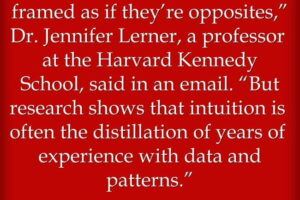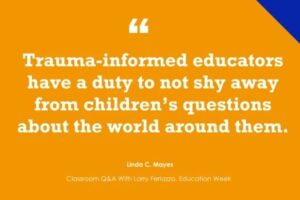
ED Pushes Workforce Readiness as a Priority
The U.S. Department of Education is doubling down on its emphasis on workforce development. Education Secretary Linda McMahon recently proposed adding career pathways and workforce readiness to her list of priorities for discretionary grant funding, possibly guiding how the department spends billions of dollars.
“After four years of the Biden Administration pedaling [sic] divisive ideology and racial preferencing, the Trump Administration will prioritize discretionary grants to education programs that actually improve student outcomes by using evidence-based strategies for instruction and creating pathways to high-demand fields,” U.S. Secretary of Education Linda McMahon said in a statement late last month. “The department looks forward to empowering states to close achievement gaps and align education with the evolving needs of the workforce.”
McMahon’s plan would channel federal funds toward efforts to align workforce-development programs with state economic priorities. The department proposed supporting projects dedicated to identifying and promoting strong industry-recognized credentials, building tools for students to compare costs and earnings of different educational pathways and growing work-based learning opportunities, like apprenticeships and pre-apprenticeships. It also encouraged support for skilled trades and the development of talent marketplaces, digital platforms run by states to connect job seekers and potential employers based on skills.
“For decades, the dominant ‘college for all’ narrative has led to a narrow focus that often leaves students with degrees and debt but limited job prospects,” the grant priority proposal reads. “By expanding the range of options so that a broader array of education providers can access existing funding in a manner that aligns outcomes with the demands of today’s workforce, the government can foster both economic mobility for students and sustained competitiveness for the nation.”
McMahon has named other grant priorities since becoming secretary as well, including mathematics education, evidence-based literacy education, education choice, patriotic education and returning education to the states. The Education Department takes its priorities into account and can give them extra weight when approving discretionary grant awards.
The department’s workforce-readiness proposal mirrors other plans from the Trump administration to put workforce development center stage. An April executive order, for example, charged federal officials with better addressing the nation’s workforce needs, including by reaching, and surpassing, one million new active apprenticeships. The One Big Beautiful Bill Act, signed into law in July, established workforce Pell, allowing Pell Grants, starting next year, to flow to low-income students in short-term programs.
The Department of Labor also came out with a report outlining “America’s talent strategy” in August and is moving forward with a controversial interagency agreement with the Department of Education for a more “coordinated federal education and workforce system.” (The agreement would move administration of career and technical education programs to the DOL.)
Education and workforce advocates say the new grant priority—open for public comment until Oct. 27—is a welcome win for causes they’ve long championed, but their celebration is tempered by some questions and concerns. Some argue ED’s workforce goals could be disrupted by other Trump administration policies. Others worry the department’s focus on nondegree pathways could lead to an underinvestment in traditional higher ed. And while some are cautiously optimistic about the proposed plan, they’re waiting to see how it works in practice.
“When we look at this functionally, in theory, all of this looks like things that we like,” said Jennifer Stiddard, senior director of government affairs for Jobs for the Future, an organization focused on the intersection between education and the workforce. “Career-connected learning … creating better pathways for students, creating better opportunities to learn about careers—these are all things that are included in here. Where we always have pause is understanding how all of this is going to be applied.”
Hopes and Worries
The proposal has sparked hope for workforce development wonks, as some of their long-held goals are becoming national priorities.
Erica Cuevas, director of education policy at Jobs for the Future, said she’s still reviewing the grant priority language, but she’s heartened to see the administration using its “bully pulpit and its discretionary grant authority to promote career-connected learning within the broader K–12 educational ecosystem,” beyond career and technical education programs, which reach a limited number of students.
Katie Spiker, chief of federal affairs for the National Skills Coalition, a research and advocacy organization focused on workforce training, said it’s clear the Education Department is focused on aligning education offerings with workforce needs, fostering industry partnerships and expanding work-based learning opportunities. She also applauded the department for its focus on forging connections between high school programs, apprenticeships and other workforce development programs, which “really reflects how the work is done on the ground,” as a “holistic effort across education and workforce.”
But she also worries that the Trump administration is simultaneously pushing policies that don’t serve these goals. For example, the president’s budget for fiscal year 2026 proposed zeroing out funding for adult education, which she views as critical for training adults in basic skills so they can fill workforce gaps.
“The funding conversations and the massive shifts and reductions in investments that we’ve seen both from the House appropriations process and from the president’s budget request are really incongruent with these important priorities that they’re setting out in this document,” Spiker said.
She also emphasized that the proposed grant priority doesn’t put any focus on “reaching and engaging with communities that have not traditionally had access” to certain high-demand jobs, including women, communities of color and workers with disabilities. She believes filling workforce shortages will require actively recruiting, and building up supports for, workers underrepresented in industries with workforce gaps.
Businesses “are scrambling to try and build broader pipelines of folks, both because of job openings that they have today, as well as those that they are projecting for next year, five years from now and into the future,” Spiker said.
In a similar vein, Lynn Pasquerella, president of the American Association of Colleges and Universities, said she found it “frustrating” that McMahon’s announcement of the grant priority described workforce readiness and diversity, equity and inclusion efforts as at odds.
“We know that employers are insisting that their employees be able to speak across differences, work in diverse teams and engage in cross-cultural understanding,” based on surveys AAC&U conducts with employers, Pasquerella said.
She supports aligning education programs with workforce needs and offering students more experiential learning opportunities. But she believes liberal arts education is also a part of training students for the workforce and fears such offerings could be sidelined in the department’s vision for supporting workforce readiness.
“The risk is always that if we focus too narrowly on career preparation—without recognizing that career preparation must involve skills, competencies and dispositions central to a liberal education—that we will have a group of students who are narrowly technically trained without the capacity to grapple with the grand challenges that will confront us in the future,” she said. “We shouldn’t create a false dichotomy between career preparation and liberal education.”
John Colborn, executive director of Apprenticeships for America, believes the proposed grant priority is over all a “positive development” for learners.
“I think it brings some more balance to the educational enterprise, which has been overwhelmingly focused on getting everyone into college,” he said. “I think we’ve realized the limitations of that particular approach.”
But while he favors exposing K–12 students to a broader range of career pathways, including apprenticeships, he also wants to make sure career-focused programs prepare students for both careers and college. He said one of the problems with vocational training in high schools in the past was that students too often were “constrained into a particular pathway.”
“We don’t want to go down that road or repeat some of those mistakes,” he said.
He noted that the partnership between the Education Department and the Department of Labor raises these types of concerns, because the DOL has less of an academic focus. But he believes stronger ties between the agencies is a net positive.
The long-term effects of the proposal, and other workforce-development plans, “is really going to turn on whether or not that nuance can be represented in the grant making and priority setting for the department,” Colborn said.
Source link



